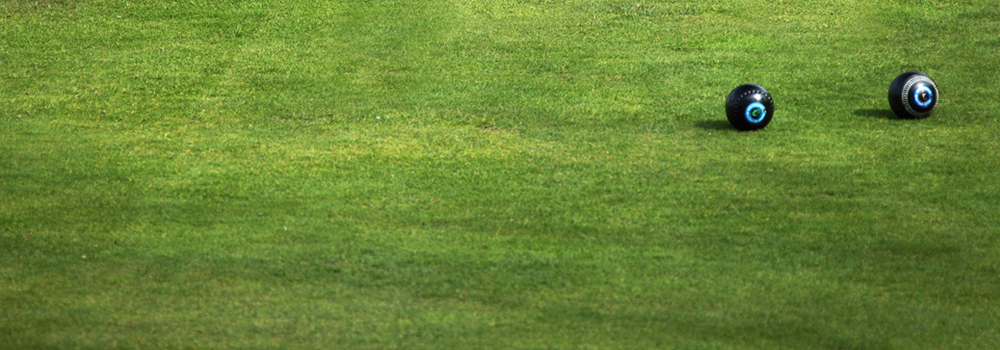
Warmth and available moisture are the keys to both grass and fungal pathogenic growth. If night time temperatures fall, growth rates will start to drop off, however lower night time temperatures will lead to heavier morning dews, prolonged periods of leaf blade wetness and increased risk of attack from fungi.
If your local conditions are at the drier end of the spectrum, water stress can quickly creep in, especially on windy days when evapotranspiration rates are higher. This is something which represents a particular risk to newly sown seed which may be in the initial stages of early germination and establishment.
Nutrition and Disease Management
Nitrogen applications will still be required but favouring products with more slowly available forms such as the methylene urea contained with the Lebanon range is both sensible and a cost effective way of feeding. Ammonium sources should be applied with care so as not to force too much soft growth which is susceptible to disease.
However, readily available ammonium is useful in maximising establishment of sown areas ahead of the winter, but be sure to really keep on top of mowing and remove dews whenever possible so to avoid rapid spread of fungal diseases.
Ensure you take the time to look at the break down of the nitrogen component of any fertilisers you buy and don’t just simply make a judgement based upon the overall headline figure.
In terms of protecting soft young growth, then an application of a preventative systemic fungicide such as Bayer’s Interface® or Dedicate® and Syngenta’s Instrata® will help to guard the plant against infection during times of high susceptibility.
Potassium is required in a higher proportion as we enter the autumn winter period. Magnesium is the element at the centre of the chlorophyll molecule and applications of this secondary macro element as the days draw in will help the plant to maximise photosynthesis efficiency.
For anyone looking to be in fine control of nutrition, the combining little and often applications of a soluble or liquid fertiliser with a straight liquid nutrient is a key tactic in marinating plant health. Phosphite is particularly useful at this time of the year when it comes to providing the plant with an easily accessible form of phosphorous which also helps to resist the spread of fungal diseases. Calcium and Chelated Iron are also vital nutrients when it comes to toughening up the plant and increasing cell wall thickness. Different elements don’t always mix cleanly together, so it is worthwhile performing jug mixing tests and then alternating little and often applications either every two weeks or once per month depending on disease pressure arising from environmental factors.
Finally; a tonic of trace elements will help to sustain levels that may have reduced over the growing season and facilitate the plant with abroad spectrum diet moving inot the winter period.
Key Tasks for October

During October the following activities are usually undertaken:
- Regular brushing in the mornings to remove the moisture from the leaf is an important maintenance regime to deter an attack of disease.
- Monitor thatch levels and aerate to achieve desired levels of oxygen within the sward.
- Tip the grass when necessary to prevent any excessive growth taking place
- Apply further top-dressing if any holes or hollows require
- Check for disease and pests, seek advice if necessary
- Drag brush daily
- Spike if conditions are right
End of Season Renovations
The success of the renovations will be down to the appropriate work undertaken including:
- Scarification
- Aeration
- Topdressing
- Overseeding
The objectives of end of season renovations are:
- To remove thatch
- To repair worn areas
- To renovate surface levels
- To remove unwanted debris
- To re-establish sward densities (overseeding)
- Application of pre seeding/autumn fertilisers to promote sward establishment
The following activities are usually carried out in the following order, when conditions allow.
Mowing the sward, preparing surfaces for renovation: lower cutting height to about 3-4mm to clean and prepare green for renovation operations.
Scarification, removal of unwanted debris: collect and disposal of arisings. Depending on the severity of the thatch, you may need to scarify several times in different directions and to a depth of 4-15mm.
Aeration will usually be done with solid tines however, occasionally hollow tines will be used if a change of soil texture is required.
Topdressing. Spreading can be achieved by several methods, utilising pedestrian or ride-on, disc or drop action top spreaders, or by hand using a shovel and a barrow. Best carried out in dry weather.
Overseeding. It is important to ensure a good groove or hole is made to receive the seed; good seed to soil contact is essential for seed germination. Good moisture and soil temperatures will see the seed germinate between 7-14 days.
Fertilising. More phosphate and potash is applied during the autumn and winter period to encourage root growth.
Watering/Irrigation is essential after renovations to ensure your seed germinates.
Brushing/switching of the playing surface keeps the green clean and removes any dew or surface water. Keeping the surface dry will aid resistance to disease.




Soil sampling is an important part of groundmanship. The results will enable the manager to have a better understanding of the current status of his soil and turf.
There are many tests that can be undertaken, but usually the main three tests to consider are:
Particle Size Distribution (PSD) this will give you accurate information on the soil type and its particle make up, enabling you to match up with appropriate top dressing materials and ensuring you are able to maintain a consistent hydraulic conductivity (drainage rate) of your soil profile.
Soil pH. It is important to keep the soil at a pH of 5.5-6.5, a suitable level for most grass plants, and a balanced level of organic matter content in the soil profile.
N:P:K: Keeping a balance of N P K nutrients within the soil profile is essential for healthy plant.

Diseases
Particularly fusarium, are often prevalent during the autumn, mainly due to the heavy dews that are present at this time of the year. Moisture on the leaf will allow diseases to move and spread easily.
The typical types of diseases you may come across are:
- Fusarium Patch
- Red Thread
- Fairy Rings
- Anthracnose
Please note: More information on these and many others can be found here: https://www.pitchcare.com/useful/diseases.php
Pests
As soil moisture increases worm casting will become a problem on surfaces. With some sports the relative period where worm casts coincide with the playing season is relatively short, in such cases where casting density is not too severe then the best options are cultural controls such as brushing or switching prior to play and maintenance operations. Longer term forms of discouragement include lowering of soil pH if it is on the high side or sand top dressings which serve to discourage the worms in the soil as well as help the castings to dry out faster and disperse more easily.
The only legally approved and properly researched control of worms is Carbendazim. Using a pH buffer can improve results if your water is compromising the efficiency of this active ingredient.
October represents the last chance for you to be Pro-active not Re-active in regards to the control of both leatherjackets (end of the month) and chafer grubs (middle of the month) with entomopathogenic nematodes. If you fail to treat this year’s grubs when they are young and instead choose to let them grow over the winter there will be NO Way to control them in the spring once the crows and badgers start digging them up, as the now mature larvae rise to the surface with the warming soil temperatures to pupate.
Weeds
As long as soil temperatures are warm then turf weeds will still be actively growing. As a result, the early part of the month represents the last opportunity to control weeds going into the winter; something which will not only improve presentation now but give facilities a head start with this issue next spring.
It is important to maintain machines by carrying out regular servicing and repairs.
As grass growth slows down, use the time to take some machines out of operation for an overhaul.
- Inspect and clean machinery after use.
- Maintain a stock of consumables for your machinery, replace worn and damaged parts as necessary.
- Secure machinery nightly with good storage facilities and strong locks
- Record makes and models and take pictures of your equipment as additional reference

Delegates attending the Bowling Green course and using the accompanying manual will be able to develop their own skills, working knowledge and expertise, by understanding the method of instruction and the maintenance principle it sets out.
Included in the Course Manual, there are working diaries showing the range of tasks needed to be accomplished each month. The Course Manual is available for purchase separately.
In addition, we are able to arrange courses to be delivered on site to groups of 6 – 10 people. Email Chris Johnson for information.
- Tidy up areas around the green; this would include tasks such as hedge cutting, clearing ditches, painting club house, weeding paths and borders.
- Plan for the forthcoming winter months and the upkeep of ditches, banks and surrounds.


